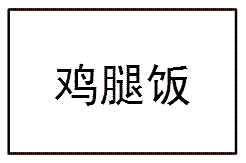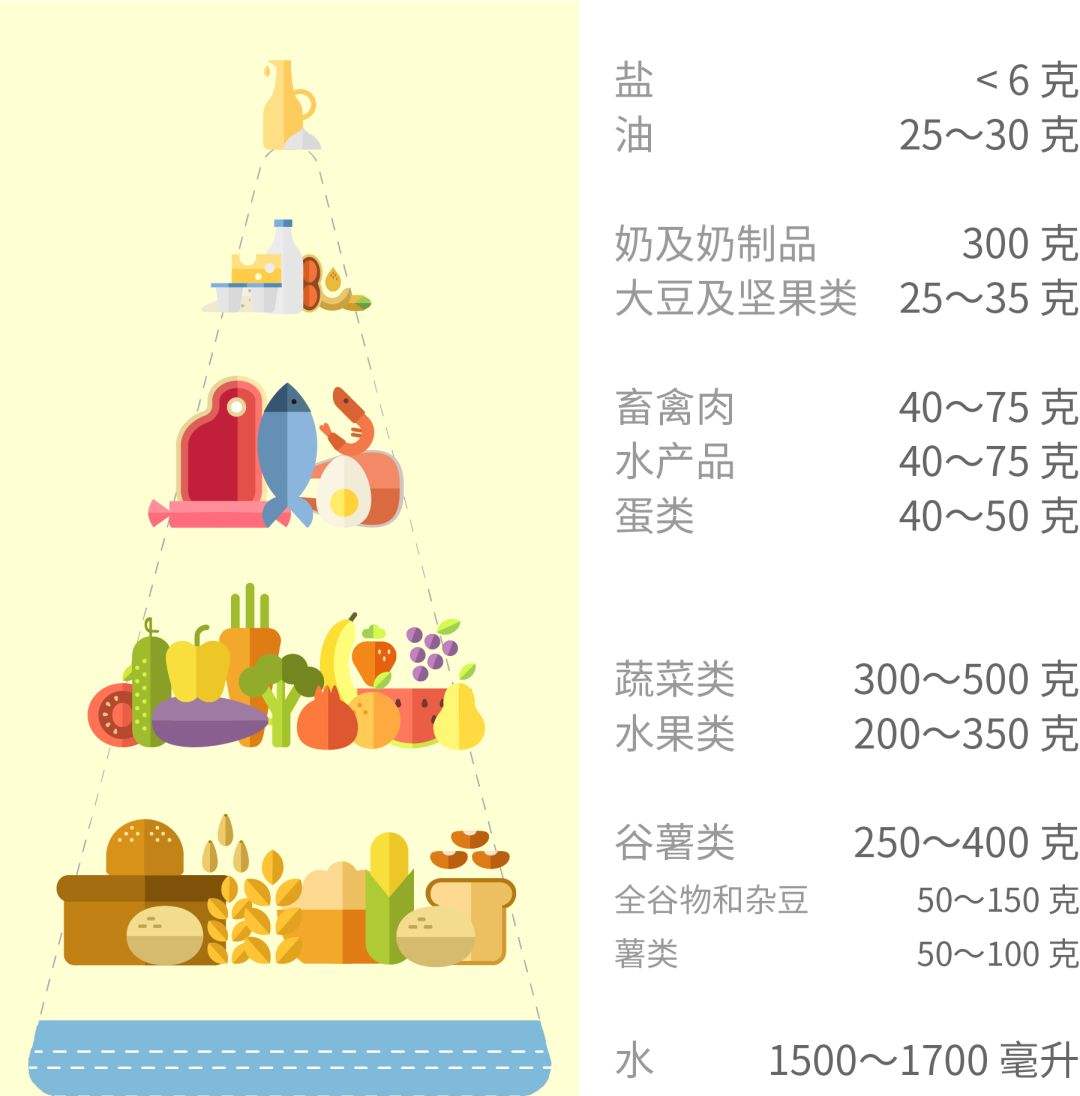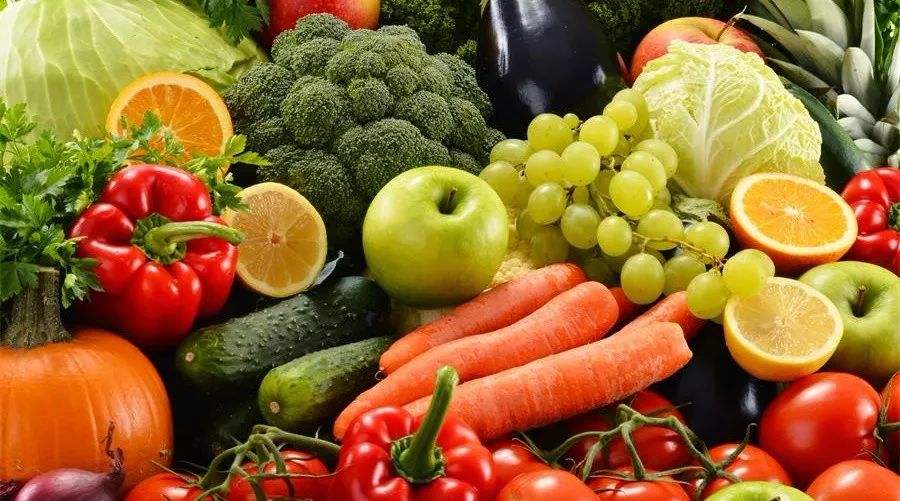As the saying goes, I save myself three times a day:
What for breakfast?
What for lunch?
What’s for dinner?

Food is the most important thing for the people. Eating has always been a top priority. Food and goods are everywhere, but not many people really know how to eat.
Do you really know how much grains, fruits, vegetables, oil and salt ordinary people should consume in a day?
Without scales, you can easily know how to eat.
In fact, the dietary pagoda has already given a very clear answer as to how much what should be eaten in daily diet.

Referring to the dietary pagoda, it is recommended to eat 250-400g of cereals and potatoes, 300-500g of vegetables, 200-350g of fruits, 40-75g of livestock and poultry meat, etc. every day.
But… I know every Chinese character and every number above. How can I put them together and get confused?
In fact, it is not difficult to divide these foods into three meals a day. For example, an adult woman of normal size can refer to this.
- Breakfast: a medium-sized egg + a box of 250ml milk + 2 slices of whole wheat bread; Lunch: sweet potato rice (sweet potato + rice) slightly larger than fist + half palm-sized meat + 2 ~ 3 handfuls of green leafy vegetables, with some bean products at regular intervals; Dinner: miscellaneous bean rice (miscellaneous bean + rice) slightly larger than fist + palm-sized fish + 2-3 handfuls of green leafy vegetables. Additional meal: If you are hungry between meals, you can also choose 2 fist-sized fruits or nuts with one palm peeled off.
This kind of three meals a day just covers all the food in the dietary pagoda, no more, no less just right.
Of course, the dietary guidelines are dead and people are alive. The above is just a reference, and everyone can flexibly match according to their preferences.
For example, if you don’t like sweet potatoes, you can exchange potatoes. 2 ~ 3 handfuls of green leafy vegetables correspond to fist-sized vegetables of other colors, such as tomatoes and radishes.
Special attention should be paid to the diet of these three special groups.
The problem of food quantity for ordinary people is easy to solve, but these three special groups should pay special attention to their diet.
1. Diabetes population
Diet of diabetic people should pay special attention to GI (glycemic index, ability to raise blood sugar) and GL (blood sugar load, amount of raising blood sugar). Choosing foods with low GI and low GL is more beneficial to maintaining stable blood sugar.

The GI value of coarse grains is usually lower than that of flour and rice, such as high GI 80 for rice and medium GI 68 for brown rice. White steamed bread is high GI 88 and buckwheat flour steamed bread is medium GI 66.
In addition to GI index, GL index is also important. For example, watermelon, although GI is not low, has less carbohydrate content, so GL value is only 9.9, which has little effect on blood sugar and can be eaten in an appropriate amount.
2. Hyperlipidemia population
There are four major restrictions on the diet of this group of people.
① Limit heat
Overweight and obesity are important risk factors for hypertension and hyperlipidemia. Therefore, it is necessary to control calorie intake and maintain a proper weight.
(2) Fat limit (trans fat must be avoided)
In terms of ingredients, aquatic products such as fish, shrimp, crab and shellfish can be selected, or chicken, duck and poultry meat can be used instead of livestock meat.

In cooking methods, steaming, boiling, braising, stewing, mixing and other less oil methods are used instead of frying and frying. High-temperature fried foods usually contain more trans fatty acids and should be avoided as much as possible.
③ Appropriate restriction of cholesterol
The current dietary guidelines have already released the restriction on cholesterol intake, and one egg per day is no problem.

However, for people with lipid metabolism problems, it is still recommended to limit the total cholesterol intake and control the daily cholesterol intake below 200 mg.
④ Sugar restriction
People with hyperlipidemia are not advised to drink sugary beverages, because beverages with high fructose content may cause triglycerides to accumulate in the liver.
3. Gout population
Purine metabolism disorder and chronic inflammation caused by bad eating habits will lead to gout, so gout patients should pay special attention to diet.
First of all, high purine foods, such as seafood, viscera, thick soup, etc., are restricted, especially during acute attacks. Middle and high purine foods such as livestock, poultry and some fish should be eaten less.

Eat moderate amount of low purine foods such as dark leafy vegetables, flower vegetables, mushrooms, etc. Low purine foods such as milk, eggs, light leafy vegetables, melons and fruits, coarse cereals and potatoes should be eaten more.
Gout patients should also follow the principle of drinking more water, not drinking alcohol, and paying special attention to not drinking sweet drinks to prevent hemostatic uric acid from increasing.
It can be seen that [eating] really hides college questions. Everyone’s situation is different, so we should learn to mix flexibly according to our own situation and constantly adjust our eating habits flexibly.
In order to get a healthy future, it is not enough to mix your diet flexibly, but also to have a health protection that can be flexibly matched and adjusted. People in different situations and different stages of life can calmly cope with changes in their lives.
